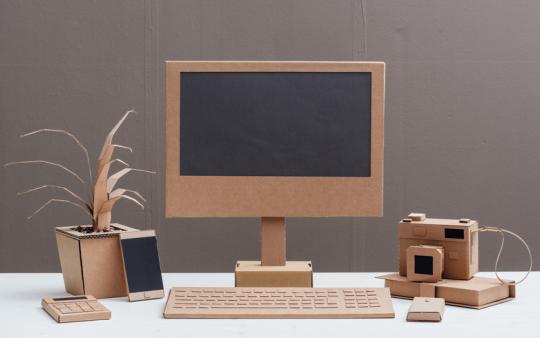With all the responsibilities your employer has, chances are greening the office isn't their top priority. Going green at work might not even be on their radar. However, just because your employer isn't excited about going green doesn't mean there aren't things you can do to make your office more environmentally friendly. By implementing a few simple steps, you and your colleagues can be well on your way to a greener, cleaner office space!
Print sparingly and copy frugally
To reduce paper waste, limit the number of prints and copies you make. Ask yourself if you absolutely need to print/copy something, or if a digital copy will do. Where possible, go paperless. Instead of asking for a paper copy of employee materials or meeting notes, request a digital copy. Switch your magazine and catalogue subscriptions to digital copies instead. Each of these techniques will help to cut down the amount of paper you use and waste.
Turn the lights off
Turning off the lights in your office is just one way to reduce energy consumption by an average of 15 percent. According to Boston University, turning off the lights reduces greenhouse gas emissions by 0.15 pounds per hour. Switching the lights off can also help to reduce the need for A/C in your office, since lights often produce unnecessary heat. If possible, try to take advantage of natural light!
Green your office — literally
There are a surprising number of ways you can benefit from plants. Adding a few plants around your desk and throughout your workplace can help to purify the air by removing volatile organic compounds and producing more oxygen. Some studies have also shown that plants can reduce the amount of formaldehyde in the air by 80 percent. Plus, introducing plants into your office creates a healthier, happier environment for everyone!
Unplug at the end of the day
Make a habit of unplugging your computer when the day is over. In fact, incentivize the whole office to do so and offer something fun as a reward. This is a great way to save energy and helps to keep your computer safe. Some studies have shown that over 60 percent of computers are left on day and night. Imagine the wasted electricity! Turning your computer off while it’s not in use ensures you’re not wasting power. For short breaks, put your device in standby mode, as screensavers are also a massive waste of energy.
Bring your own recycling bin
If your workplace doesn’t have a recycling program, start one. Bring a blue bin to work and set it next to your desk. Recycling helps to reduce landfill waste, protects the Earth’s resources, uses less energy, and even saves your employer money. Encourage your colleagues to use it. Hopefully, this will inspire others to bring in bins as well. It may even spread to the rest of your office.
Switch to cloud computing
Instead of running programs or applications on your physical computer, run them on the cloud. Switching to the cloud allows you to access your files, programs, and applications anytime, anywhere. You’ll use less energy since the server capacity scales up and down to fit your cloud needs. Finally, you’ll eliminate much of the waste and pollution that comes with getting rid of hard drives, paper, and ink.
Invest in reusable kitchen supplies
If you’re still using plastic containers or utensils at work, stop! Plastic is one of the biggest environmental pollutants. It’s not biodegradable, it's harmful to plants and animals, and the waste is polluting the ocean. Instead of using plastic or paper kitchenware, invest in reusable supplies. You can even purchase edible utensils online! Consider stocking the break room or kitchen with reusable materials and encourage your colleagues to use them. This will help to reduce the amount of plastic you’re throwing away.
Set up a carpool
Reducing the number of cars on the road can have a significant impact on the environment, which is why you should set up a carpool. Sharing a ride to work and back every day can reduce greenhouse gas emission by 3.72 kilograms. Carpooling all year reduces greenhouse gases by 893 kilograms. That means cleaner air, better roads, and less gasoline. Plus, you’ll save some money and meet new people. Best of all? You’ll get to work faster thanks to the HOV lane benefit.
Take the stairs instead of the elevator
Not only is taking the stairs good for the environment, but it’s good for you too! On average, elevators use up to 2-5 percent of your building’s energy. Choosing the stairs over the elevator can save some kilojoules to use elsewhere. Plus, it keeps your body and brain healthy, increases energy and productivity, and reduces stress. To get your team involved, consider creating a stairway promotion plan, which encourages employees to break up the long amount of time sitting with physical exercise.
Talk to your boss about going green
Even if your boss isn’t particularly green-focused right now, that doesn’t mean they won’t be in the future. For most businesses, becoming environmentally-conscious is the way of the future. Take a few minutes to talk to your boss about how ways your business can go green will help him or her look good, too. Plus, as your efforts to go green start to pay off, your employer may be more willing to get on board.
The biggest thing to remember about going green at work is to start small. Even the smallest actions can make a significant impact! Following the tips above and encouraging your coworkers to join the movement can amount to huge changes in the environment. Plus, your efforts might finally get your employer excited about going green, which could turn your office entirely eco-friendly!






